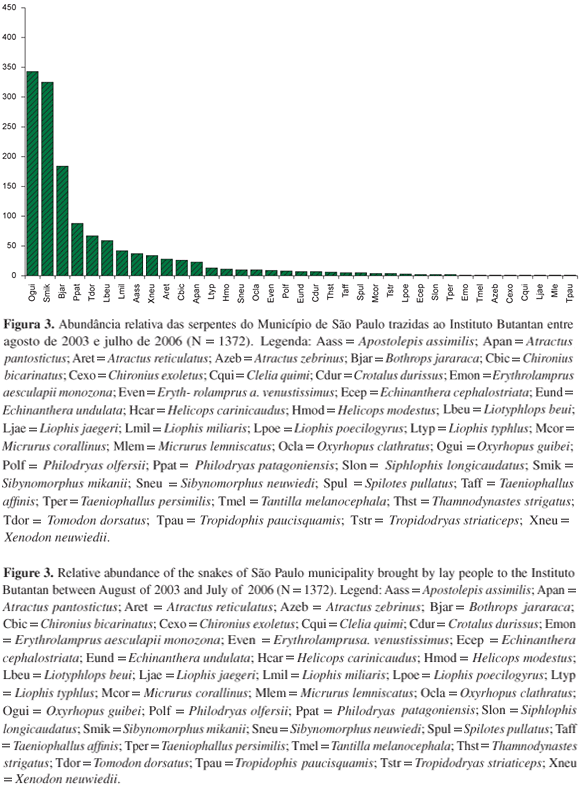The reptile fauna in the municipality of São Paulo is well sampled due to intensive collection in the last 100 years. In the present work we provide a checklist of reptile species in São Paulo municipality based on preserved specimens in scientific collections. The reptile fauna was also characterized by three ecological parameters: habitat use, substrate use, and diet. We recorded a total of 97 reptile species (two turtles, one crocodilian, 19 lizards, seven amphisbaenians, and 68 snakes). Approximately 70% of the lizards and 40% of the snakes are typical of forest habitats of the Serra do Mar mountain range. Other squamates are typical of open formations that occur mainly on inland Cerrado habitats. All turtles and the crocodilian are associated to riparian habitats. Approximately 63% of the lizards are predominantly terrestrial, and the remaining species are arboreal. Most species of snakes are terrestrial (38%) or subterranean/criptozoic (25%) whereas a smaller proportion are arboreal (18%) or aquatic (9%). Lizards feed upon arthropods. Almost 50% of the snake species are specialized or feed mainly upon anuran amphibians. Other important items consumed by snakes are mammals (24%), lizards (18%), subterranean vertebrates (10%), and invertebrates (earthworms, mollusks and arthropods; 15%). A total of 51 reptile species have not been recorded for the last six years. Probably many of these species are extinct in the region due the intense local urbanization and habitat loss. The survey of species collected in São Paulo municipality and received in the Instituto Butantan in recent years allowed the identification of 10 lizards at least 42 snake species already occurring in the region. The high species richness of the original fauna seems related to the geographic location of the municipality, in a contact zone between forested areas of the Atlantic Forest (ombrophilous forest) and open formations (savannas, high-altitude grassland). Thus, the original habitat composition probably allowed sympatry among different species pools typical of both open and forested formations. The extant snake fauna recorded in the last three years indicates a higher loss of the species in open formations when compared to the forested areas.
reptiles; diversity; municipality of São Paulo; richness; ecological tendency





